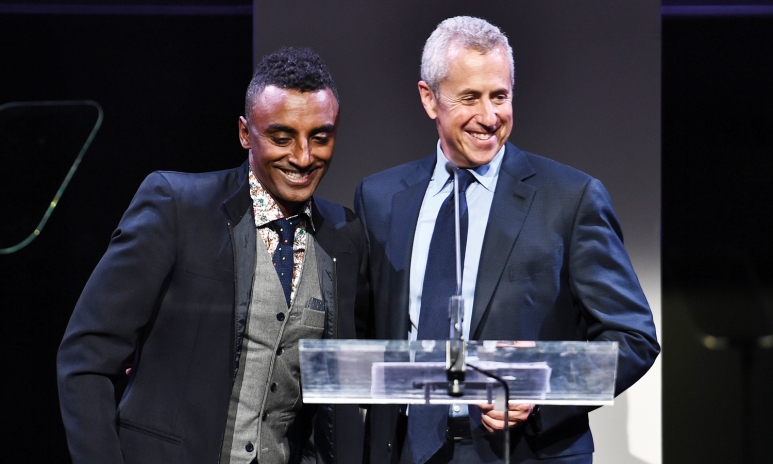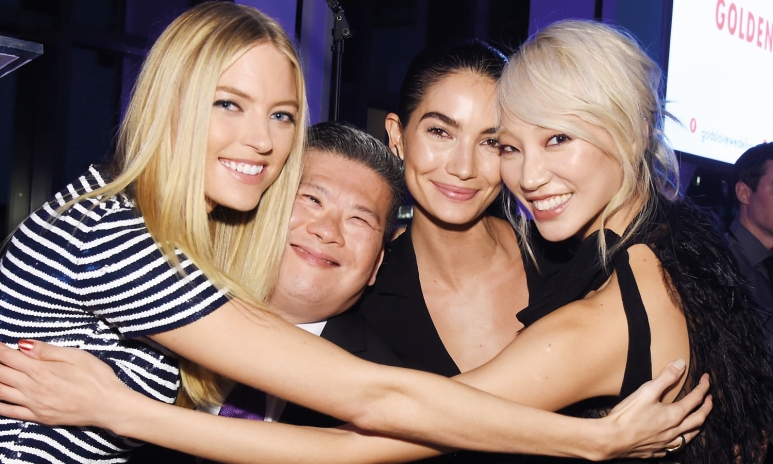The designer and actress partner up in a philanthropic push

Photo courtesy of Michael Kors
One of the gongs handed out in New York late last year at the 10th annual Golden Heart Awards, a glittering, celebrity-strewn fundraising gala presented by local charity God’s Love We Deliver, was the Michael Kors Award for Outstanding Community Service. Given that Kors runs a US$1 billion global business with more than 550 stores, it’s hard to imagine the designer has time for himself, let alone the philanthropic work that would justify naming an award after him.
But Kors has a long record of giving back to the community. God’s Love We Deliver recently named its new Soho headquarters after him in recognition of the US$15 million his company has raised for the charity. And last year he was named a United Nations World Food Programme (WFP) ambassador in recognition of Watch Hunger Stop, a project he started in 2013 to raise awareness and cash for the WFP’s School Meals Programme. Kors’ project—funded through a range of initiatives, including limited edition watches and activity trackers, and various in-store and social media programmes—has delivered more than 13 million meals since its inception. For the second year running, Kors has enlisted actress Kate Hudson as the face of Watch Hunger Stop. They chat with us about the project and why connecting with the next generation is so important.

Photo courtesy of Michael Kors

Photo courtesy of Michael Kors

Photo courtesy of Michael Kors

Photo courtesy of Michael Kors
Hong Kong Tatler (HKT): What convinced you to become part of this project?
Kate Hudson (KH): It really was a no-brainer. I learned about the efforts of the WFP a couple of years ago and it wasn’t long after that that Michael asked if I wanted to be part of his Watch Hunger Stop programme.
Michael Kors (MK): Kate and I have been friends for many years. We’re a great team, and she’s got great energy and optimism and knows how to rally the troops.
HKT: Why watches and activity trackers?
MK: I asked myself the big questions. How do I get everyone involved? What’s one way I can get people from around the world, from all different backgrounds, engaged? A lot of people feel they don’t have anything to give, but I wanted people to see they could do good on a personal level. As a designer, I naturally gravitated to products and thought about something people use daily or would notice if worn by someone else, which is where I got the idea to do a special timepiece—something that’s attractive and functional, that gets the conversation going.
KH: Fitness and a healthy lifestyle are very important to me, and knowledge is power,
so the activity tracker is a great way to monitor results.
HKT: How do you measure the progress of Watch Hunger Stop?
MK: When I first started, I thought, ‘Wouldn’t it be amazing to hit 10 million meals?’ We’ve hit 13 million and we’re going to hit 15 million meals for children around the world very soon. A little while ago, statistics showed one in seven people was hungry, and now it’s one in nine, so we’re seeing results. Zero hunger is possible.
KH: Hunger is a problem that’s easy to understand and very tangible. So to say you will donate a meal, you can immediately conceptualise how powerful that can be. It’s great to be a part of something that’s impactful where we can see concrete changes heading down the road to ending hunger.
HKT: When did you realise the importance of giving back?
MK: I knew what I wanted to do in my early 20s and have had the wonderful opportunity to do what I love in my career since the beginning. I volunteered regularly on a local scale at God’s Love We Deliver from the 1980s, and as I began to travel the world as a designer, it became apparent to me that fashion, like charity, has no borders. Everything can be done in a global way.
KH: My mother encouraged me to look outwards and to help others before you do anything for yourself. I grew up with the notion of every dollar you make, 10 cents should be given back.
HKT: How can social consciousness be nurtured?
KH: It’s important to teach children at an early age so they understand things like recycling, conserving electricity and water, and I think the dialogue gets bigger as you get older. What Michael does is really inspiring—to have a social consciousness behind what you’re putting out there is vital to how we give back. I believe being socially conscious needs to be an intrinsic part of what you’re putting out there to truly get the message out. It’s not an afterthought.
HKT: How useful are social media platforms for charitable initiatives?
KH: They’re a great tool to bring social awareness to things that you care about. I’m very specific about how I use my social media channels. I believe it’s incredibly important to be authentic.
MK: I agree. Everyone has to remember that when you put yourself out there in public by giving back, you’re spreading a message. If one person can convince 10 people, and those 10 people convince another 10 each—that’s how it spreads. Social media touches on the younger generation and it’s a way we are educating them on the importance of giving back to the community. We constantly have to figure out new ways to incentivise and communicate with the new generation.
HKT: Is there a special reason that you are so passionate about feeding the needy?
MK: This is a cause that hit close to home during the ’80s in New York. Aids became an epidemic and every few days you would hear of a friend or someone you knew becoming sick. I didn’t know what I could do. I’m not a doctor, I’m not a politician, and at the time there was no hope. I looked around to see what we could do to provide concrete help, and that’s when I came across God’s Love We Deliver, which was then a small programme run out of a church delivering meals to the sick. We were not only just giving them something as simple as a meal, we were giving them hope. Many of these people had no other connection with the outside world—their families, their friends, everyone had left them. And I think one thing about the epidemic of global hunger is the fact that we can actually end it; the food is there, and we have the right partners to do this with, and we’re on our way.
This article was originally published in the January 2017 issue of Hong Kong Tatler
